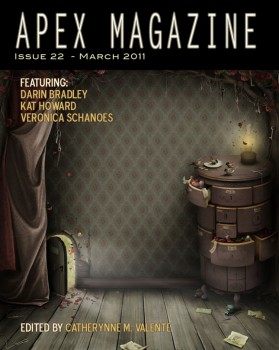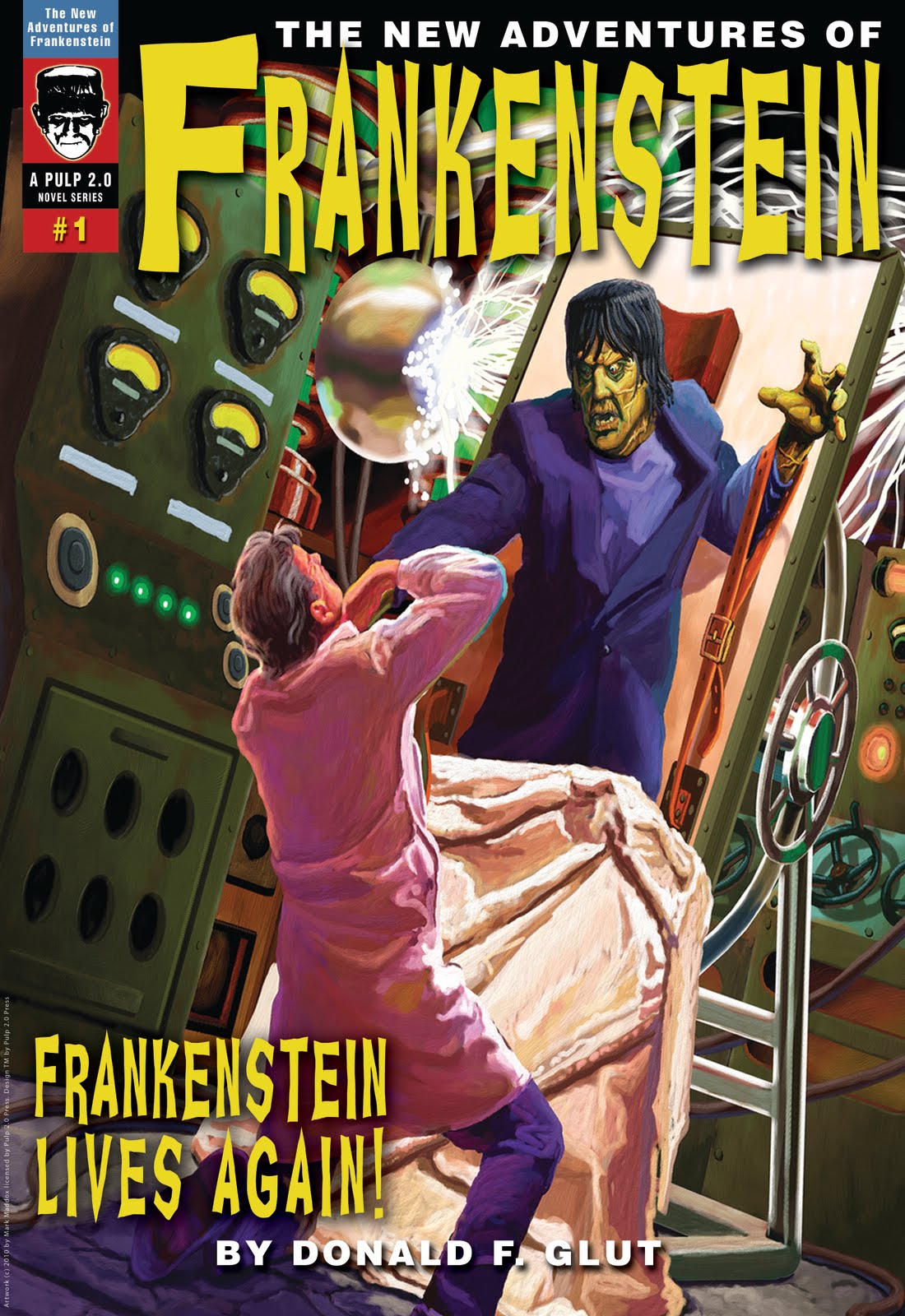Weird Tales 357 Arrives
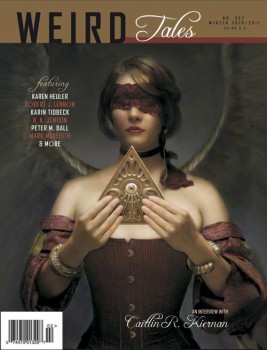 The office copy of Weird Tales arrived today, and it looks great. Howard Andrew Jones immediately challenged me to rock-paper-scissors-lizard-Spock for the right to take it home, and then had the poor grace to win the best two-out-of-three rematch. Bonehead.
The office copy of Weird Tales arrived today, and it looks great. Howard Andrew Jones immediately challenged me to rock-paper-scissors-lizard-Spock for the right to take it home, and then had the poor grace to win the best two-out-of-three rematch. Bonehead.
Before it passed out of my grasping hands forever, I did notice that this issue has six new short stories, from N.K. Jemisin, Karen Heuler, J. Robert Lennon, Karin Tidbeck, Peter M. Ball, and Mark Meredith, and poems by Kurt Newton and Seth Lawhorn.
Matthew Kressel contributes a non-fiction piece on real-life weird tales, Geoffrey H. Goodwin interviews Caitlin R. Kiernan, and Contributing Editor Kenneth Hite reports on Lovecraft’s fascination with the town of Kingsport in “Lost in Lovecraft.”
Rounding out the issue are four pages of book reviews and an editorial by Ann VanderMeer, in which she reports on staff changes at the magazine, including the resignation of Stephen Segal, who left for an editorial position at Quirk Books. Ann has now become Editor-in-Chief, and continues to serve as fiction editor, and Mary Robinette Kowal and Paula Guran have joined the staff, as Art Director and Non-Fiction Editor, respectively.
We last reported on Weird Tales with issue 356 in November. Good to see the magazine stick to a regular quarterly schedule, just as promised.
Cover price for the issue is $6.99. It is 80 pages; the gorgeous cover is by Lee Moyer. Their website is here.
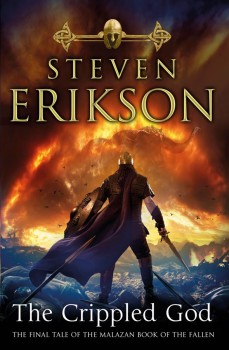
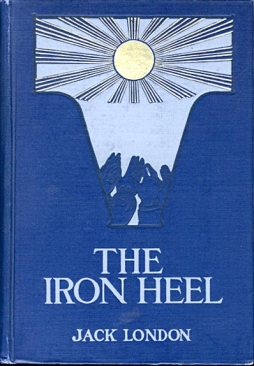 Last week I discussed Olaf Stapledon’s Star Maker as an example of a true literature of ideas: a work structured not as a traditional narrative, with plot and character development as we know them, but instead built around the ideas that the work’s presenting, so that the book’s material is defined not by narrative but by the ideas at the core of its theme. As it happens, I recently stumbled across another example of this sort of thing.
Last week I discussed Olaf Stapledon’s Star Maker as an example of a true literature of ideas: a work structured not as a traditional narrative, with plot and character development as we know them, but instead built around the ideas that the work’s presenting, so that the book’s material is defined not by narrative but by the ideas at the core of its theme. As it happens, I recently stumbled across another example of this sort of thing.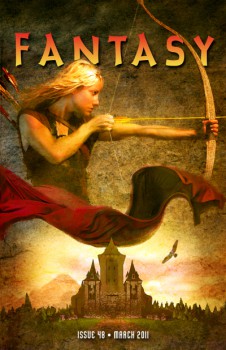
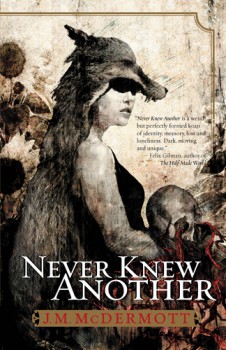 Traveling around the world in eighty days is not only quite possible, but a leisurely journey. One could, on this trip, stop to smell the roses, perhaps do a little sight-seeing on an island or two, and pursue adventure in remote locations. Really, if one were pressed for time, anyone with a passport and a few plane tickets could circumnavigate the globe in about a week or two, depending on the flight paths of the planes.
Traveling around the world in eighty days is not only quite possible, but a leisurely journey. One could, on this trip, stop to smell the roses, perhaps do a little sight-seeing on an island or two, and pursue adventure in remote locations. Really, if one were pressed for time, anyone with a passport and a few plane tickets could circumnavigate the globe in about a week or two, depending on the flight paths of the planes.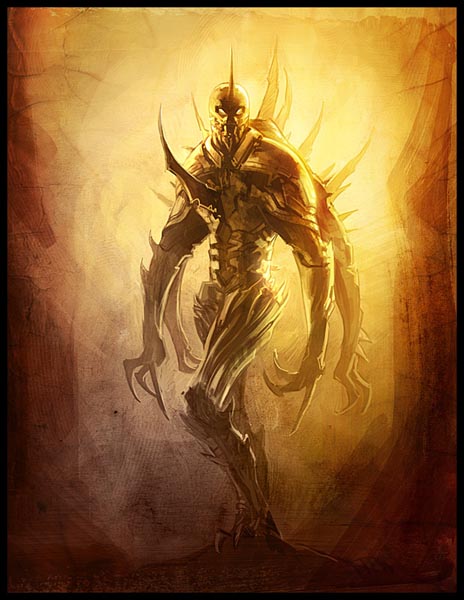
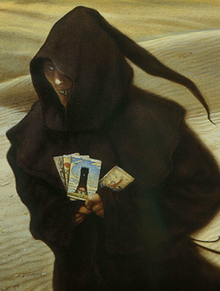
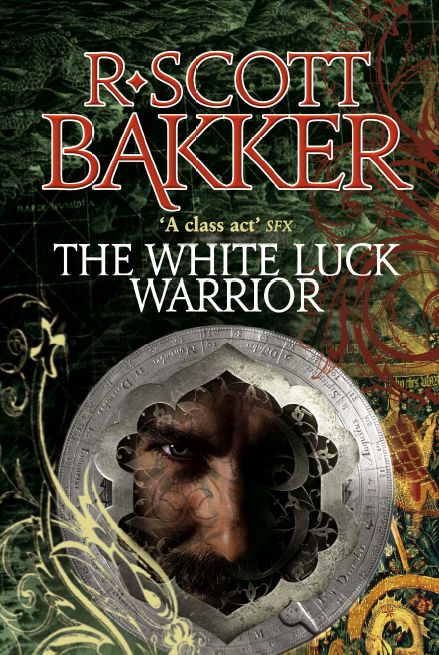 It won’t be long now…
It won’t be long now… Astronomer James Elliot gets a featured obit because he discovered the rings of Uranus (okay, wipe that smirk off your face). What’s also noteworthy is that he apparently did so in a kind of jury-rigged fashion. According to the Times obituary:
Astronomer James Elliot gets a featured obit because he discovered the rings of Uranus (okay, wipe that smirk off your face). What’s also noteworthy is that he apparently did so in a kind of jury-rigged fashion. According to the Times obituary: Also in the news is the tsunami and the largest earthquake in a century or more that hit Japan. Whatever our global technological progress (even while world politics continues to destabilize), we tend to forget just how fragile we are as a species even without our efforts to do ourselves in. During the Cold War, the end of the world was nuclear. Then it was terrorism and religious fanatacism. But, maybe it will end up just being good old Mother Nature. Time to go reread J.G. Ballard.
Also in the news is the tsunami and the largest earthquake in a century or more that hit Japan. Whatever our global technological progress (even while world politics continues to destabilize), we tend to forget just how fragile we are as a species even without our efforts to do ourselves in. During the Cold War, the end of the world was nuclear. Then it was terrorism and religious fanatacism. But, maybe it will end up just being good old Mother Nature. Time to go reread J.G. Ballard.